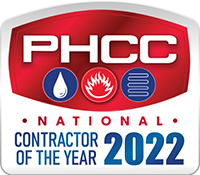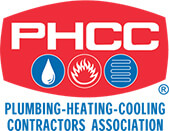
Sump Pump
What Is a Sump Pump? Everything That Homeowners Need to Know
If there’s one thing every homeowner fears, it’s flooding. On average, a flooded basement alone costs upwards of $43,000 to repair, and that price can easily go higher. Considering this, it’s important to make sure your home is prepared to handle flooding before it becomes an issue. A sump pump is one of the best ways to protect your home from flooding. But what is a sump pump, and how does it work? Keep reading for all the answers.
The Purpose of a Sump PumpA sump pump is a type of pump installed into a home to drain water before it has the chance to cause a flood.
Sump pumps are most frequently installed into the basement of a home, as this is where most flooding starts. The sump pump collects water in a basement and carries it outside, disposing of it in a pre-determined spot. Sump pumps are typically installed underneath the floor, but they’re sometimes installed above it, it all depends on the type of sump pump, which we’ll discuss later.
Not every home needs a sump pump. However, if you live in an area that experiences regular flooding (flood zone), heavy rains, or if you live near the water, you’re probably better off having one.
How Sump Pumps Work
As stated, most sump pumps are installed into a pit in the ground of your basement. With the pump installed, a drain is also made in the ground to take in any water. Water drains into the pump, and the pump moves it through a series of piping to the outside of the home. The pump will continue to pump out water until there’s no more water to pump.
The Float Activator
Most sump pumps have what’s called a float activator that triggers the pumping process. When water rises to the level of the float activator, it triggers the pump. The motor kicks in and sends the water through the discharge pipe, all the way outside the home. Every sump pump has what’s called a check valve to keep that water flowing one-way — you don’t have to worry about it flowing back into your home unless your sump pump is broken.
How Sump Pumps Run
Sump pumps require an electrical outlet to run. You don’t need to do any hardwiring into the home, which saves significantly on installation costs. All you need to do is plug it into a regular, grounded outlet. You should get a circuit interrupter, though, to avoid electrocution.
The Different Types of Sump Pumps
There are a few different types of sump pumps to consider before locking into a decision. Each type of sump pump comes with its own pros and cons, so it’s important to know them all. Let’s have a look at each different type.
Submersible Sump Pump
The submersible sump pump is one of the most common choices for homeowners. This type of sump pump is installed into a hole in the ground. They use the previously-described float activator to determine when to pump out water. Submersible sump pumps run off an electrical outlet, and they’re much quieter than other sump pumps thanks to being underground.
The motor is sealed and oil-cooled, keeping it safe from moisture. You can actually install multiple submersible sump pumps into your home depending on the size of your sump pit. One of the pumps would be the primary pump, while another could be the secondary pump, and a third could act as a battery powered backup system. This could get expensive, but it’s ideal for high flood-risk homes.
Submersible sump pumps come with lids to hide the sump hole. The wiring and the drainage pipe stick out from the top of this sump cover. Submersible sump pumps are considered some of the most high-quality sump pumps available.
Floor Sucker Sump Pump
If you want a sump pump that doesn’t require a sump pit, try a floor sucker sump pump. Floor sucker sump pumps don’t need to be installed in any way. They’re ready to use right away. They don’t stop flooding — they’re used after flooding has already occurred — but give the homeowner a way to clean up flooding after it’s happened.
Floor suckers are most frequently used by contractors before installing a new sump pump. They set up the floor sucker to quickly remove any water already present on the floor. You can submerge floor suckers up to a certain depth, meaning they’re great for emergency, light and moderate flooding.
While these are great for emergency service calls, they’re no replacement for an actual sump pump. They’re loud, they have low capacity, and they don’t stop flooding at all. Floor suckers are recommended for emergency use only.
Pedestal Sump Pump
A pedestal sump pump is cheaper than a submersible sump pump, and great for basements with frequent flooding. The pedestal sump pump has two main pieces: the motor, which sits above the basement floor, and the hose that goes down into the sump pit. Pedestal sump pumps require much narrower, more shallow sump pits than submersible sump pumps. They use a float activator, like a submersible pump, to determine when to start pumping water.
Pedestal sump pumps tend to last longer than submersible pumps, as they’re not constantly submerged in water. Although submersible pumps protect their motors from water damage, they’re still more susceptible to damage. Pedestal pumps are also easier to repair if something does go wrong, as the main piece is above the ground.
The downside, however, is that a pedestal pump has less power than a submersible pump. That means they tend to drain water slower, making them non-ideal for large floods. The pedestal also takes up more space than a submersible pump as it’s situated above the ground rather than in it. If you have an area of the basement or a crawl space that experiences regular, light flooding, though, a pedestal sump pump is a great option.
Water Powered Sump Pump
This may sound counter-intuitive at first, but water-powered sump pumps make great backup pumps. As you may have guessed, water-powered sump pumps don’t need any electricity to run. Once the water level rises enough in the basin, the float activator kicks it in. The pump then uses the water inside of it to pump that water out, preventing further flooding.
Water-powered sump pumps are surprisingly effective, and are comparable to submersible pumps in how they’re installed and maintained. However, they’re best used for backup pumps as the pumping process is a bit slower than a dedicated sump pump.
The Most Common Uses for Sump Pumps

The most common use for a sump pump, as you may have already guessed, is for draining a flooding basement or crawl space. However, there are alternative uses for sump pumps. Let’s take a brief look at some other ways you can use a sump pump.
Draining Hot Tubs & Pools
Every hot tub needs to be drained and cleaned on occasion, and a sump pump is a great way to get this done. Take some hosing, attach it to your sump pump, and stick the other end in your hot tub. The tub will drain in minutes, leaving only a small puddle still in the bottom of the tub. Wet-vac that up, clean your tub, and fill it back up.
You may not want to drain the tub into the yard, though, due to the chemicals. You can drain it into a large plastic tub or pool instead. Beyond hot tubs, you can even drain your pool with a good sump pump! Make sure to skim all the leaves and debris out first, then follow the same steps as draining the hot tub. The pool will take a bit longer to drain, but it takes a lot of heavy work out of the process.
Drain a Hot Water Tank
It’s recommended that you drain your hot water tank occasionally to get rid of built-up sediment. Attach a hose to the hot water tank, attach the other end to the pump, and get draining. Make sure not to touch the water or get it in your face. It’s hot.
Dry Your Yard
If your home is prone to flooding, your yard likely is, too. If you have a low spot in your yard that’s prone to flooding, stick a hose in the sump pump and stick the other end in the flooded area. You can then drain some of that surface water elsewhere.
You can even install a sump pump into the flooding area of your yard. You’ll need to dig a sump pit, concrete it over, and get a cover for it. This is a great solution for areas of your yard that frequently flood.
Drain Livestock Tanks
If you’re a farmer, you need to supply your livestock with fresh water to keep them healthy and happy. If your livestock tank is getting dirty, use a sump pump to drain it and replace the water. This is a much better alternative to dumping the water into the dirt and creating mud.
How to Choose a Sump Pump
Choosing a sump pump comes down to your overall needs, your risk of flooding, and your budget. The best way to choose a sump pump is to consult a professional. Many sump pump installation companies, including United Air Temp, offer free estimates and special deals for homeowners. They can come over to your home and determine what type of sump pump you need, where to install it, and how much it’ll cost.
If you’re subject to heavy flooding, a submersible sump pump and a backup pump of some type is recommended. If you have an area that experiences low-level but frequent flooding, a pedestal pump might be best. If you have a flooding emergency, you may need a floor-sucker pump. Always have your situation examined by a professional before locking into a decision.
The Installation Process
You can install a sump pump yourself, but the best course of action is to call a professional. They understand how to install sump pumps and keep them running. Contact United Air Temp to get your sump pump installed right.
If you don’t have a sump pit, the first step is to install one. Find an area with an electrical outlet, then dig a hole about 10 inches wider than your sump pump. Fill the bottom of the hole with about three inches of concrete, then fit the sump pump into it.
With the sump pump standing in place, fill the area around it with more concrete to keep it upright. Leave about two inches of space at the top, and don’t cover any inputs for the sump pump. After this, you’ll need to install the discharge pipe. This usually requires drilling a hole into the discharge pipe.
Use wire ties and attach the electrical cord to the discharge pipe. Install the check valve into the open end of the pipe, and put the pump into the sump pit. With the pump installed, it’s time to lay a path for the discharge pipe.
Using PVC pipe, create a pathway from the sump pump across the walls and ceiling of your basement leading to the drainage area. Most people make a small hole in the wall for the PVC to poke through. You can then seal the area around the drainage pipe with caulking.
You can attach a spreader to the end of the pipe to spread the water out so it doesn’t pool in one place. After that, all that’s left is to cover up your sump pump. You can test it by pouring some water into the pump and seeing what happens.
Get a Sump Pump Installed Now
A high-quality sump pump can save you tens of thousands of dollars or more in damages. You never know when your home might flood, but it’s better to be safe than sorry. Now that you know everything there is to know about sump pumps, it’s time to get one installed for yourself.
If you need sump pump maintenance, installation, or other services related to heating, cooling, and plumbing, see what United Air Temp offers.

















